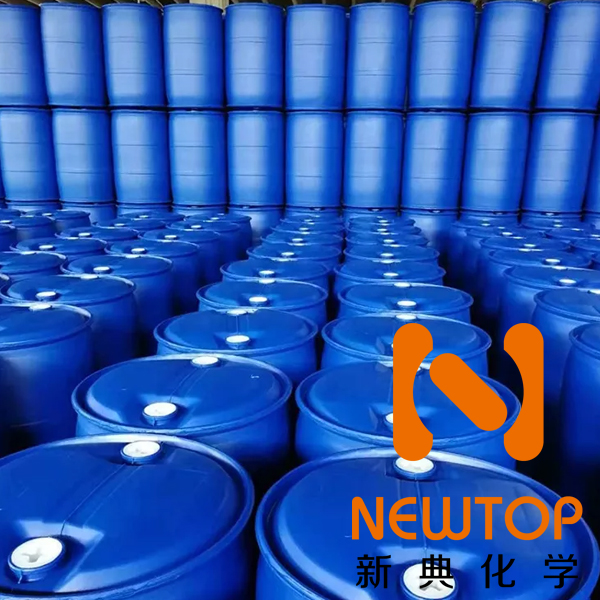Toyocat ET catalyst Tosoh
Overview:
Polyurethane catalyst Toyocat ET al
Alias: Polyurethane Catalyst Toyocat ET, Catalyst A-1, Dabco BL-11, Niax A-1, Jeffcat ZF-22, Lupragen N206, Tegoamin BDE, PC CAT NP90, Addocat 108, Toyocat ET
Physical Properties of product
Molecular formula: C8H20N2O;
Relative molecular weight: 160.3;
CAS number: 3033-62-3;
Light yellow clear liquid;
Purity ≥99%;
Moisture ≤0.5%;
Viscosity (25℃) : 4.1mPa.s;
Density (25℃) : 0.902g/cm3;
Flash point (PMCC) : 74℃;
Vapor pressure (20 ° C) : 1.3Pa;
Boiling range: 186-226℃;
Toyocat ET catalyst A-1 can promote chemical reactions alone or as part of an amine catalyst system and is an effective amine catalyst for polyurethane foam. It contains 70% bis (2-dimethylaminoethyl) ether, which is one of the most active catalysts currently used in industry. Niax catalyst A-1 efficiently promotes the basic chemical reaction of polyols with isocyanates and water with isocyanates, improving polyether foaming processes for high-density unfilled foams, filled foams, high-bearing soft foams, low-density foams, and high-density foams. – Elastic moulded foam.
Toyocat ET catalyst A-1 increases the specific rate constant of the chemical reaction between polyols and isocyanates by 10% compared to the next most reactive amine (A mixture of triethylenediamine). Even more impressive, Toyocat ET catalyst A-1 can achieve A specific rate constant 50% higher than that of triethylenediamine in the chemical reaction between water and isocyanate.
Toyocat ET catalyst A-1 has A powerful effect on the reaction between water and isocyanate, helping to promote a controlled acceleration of the chemical reaction between polyols and isocyanates through small changes in stanylous octoate levels – an important feature in commercial open-cell production of flexible, non-cracking polyurethane foams.
An important feature of Toyocat ET catalyst A-1 is the ability to adjust the level used over A wide range to effectively control the foam rise time – without sacrificing the range of operation of stannous capylate.
70% bis (dimethylaminoethyl) ether, a very highly active polyurethane catalyst, which is widely used in the production of all types of foam, and is especially used in more difficult to process soft foam requiring a high permeability foam structure;

Leak treatment
Stop leaks as much as possible while ensuring safety. If a minor leak is found, treat it with sand or other absorbent material and place it in a clean, dry container for subsequent treatment. If a large amount of leakage occurs, the leaked material should be collected for subsequent treatment. Avoid material entering groundwater or surface water, because it is not easily degraded by biological matter. All collected leakage materials should be disposed of in accordance with the relevant regulations of the local environmental protection department.
Disclaimer
The information and technical advice provided above are obtained from reliable sources. However, the data provided by us is without express or implied warranties, and no commitments are made herein. If you need to use our products, we recommend a series of tests. The application, use, processing or production of products based on the technical information provided by us is outside our control and therefore the responsibility lies with the user. Conditions and methods of handling, storage, use or disposal of this product are beyond our control and may be beyond our knowledge, and under no circumstances will we be liable for loss, damage or related expenses arising from improper handling, storage, use or disposal of this chemical. For more information, please review the technical safety specifications of our products or contact our Marketing Services department.
Safety Information:
Catalyst, rinse with soapy water promptly after contact with skin. The staff can wear an eye mask or safety glasses to achieve the purpose of eye protection. Eye washing and bathing facilities should be available near the workplace. When working in places that may come into contact with the product, you should pay attention to personal hygiene and use detergent to wash the skin in contact with the product before eating, smoking and leaving the work.
Shelf life:
Remain unopened for two years
Storage and Transportation:
Should be sealed, stored in a dry cool ventilated warehouse
Packing:
200KG/ barrel storage: It is recommended to store in a dry and cool area with proper ventilation. After the original packaging, please fasten the packaging cover as soon as possible to prevent moisture and other substances from mixing and affecting the product performance. Do not inhale dust and avoid contact between skin and mucous membrane. Smoking, eating and drinking are prohibited in the workplace. Shower and change after work. Store contaminated clothes separately and use them after washing. Practice good hygiene.
Technical support and business contacts E-mail:sales@newtopchem.com


